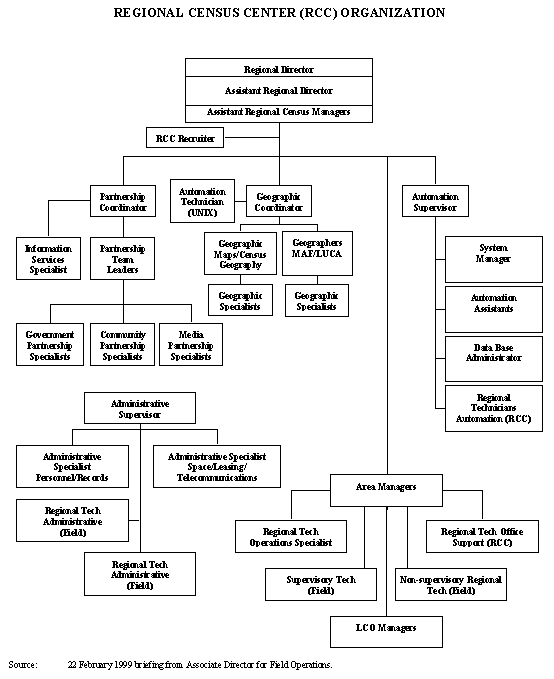
| |    Field Office Infrastructure Nationwide Network: In March 2000, the Census Bureau (Bureau) will use the United States Postal Service to deliver census forms to the vast majority of households that have a mailing address. The postal delivery strategy includes an advance letter, a questionnaire mailout, and a reminder card for those who do not initially respond. The Bureau anticipates that approximately 72 million households will respond by mail.
To find and count the estimated 46 million households that fail to return a form by mail, as well as those people living in unconventional quarters, the Bureau is in the process of establishing a nationwide network of temporary offices and staff.
Decennial Census OfficesRegional Census
Centers (RCCs) | 12 | Census Field
Offices (CFOs) | 402 | Local Census
Offices (LCOs) | 520 | National
Processing Center | 1 | Data Capture
Centers (DCCs) | 3 |
Source: 22 February 1999 briefing from
Associate Director of Field Operations |
To pay for and manage the Bureauís workforce for Census 2000, a temporary administrative infrastructure has been planned. This infrastructure functioned well in all three dress rehearsal
sites and the Board expects the same during Census 2000.1
Major administrative infrastructure functions include developing a system of competitive pay rates and position descriptions. The Bureau has also created a bonus/incentive pay system aimed at yielding quality data, staff retention, and high productivity.2

Regional Census Center (RCC): The 12 RCCs, located near one of the Bureauís 12 permanent regional offices, are the center of the temporary office network in each region. RCCs manage
all census field data collection operations and address listing through a network of CFOs and LCOs. They also produce address maps and coordinate the Local Update of Census Addresses (LUCA) program. The average size of an RCC is 150 employees, answering to the Regional Director for that region. |
   |
|

